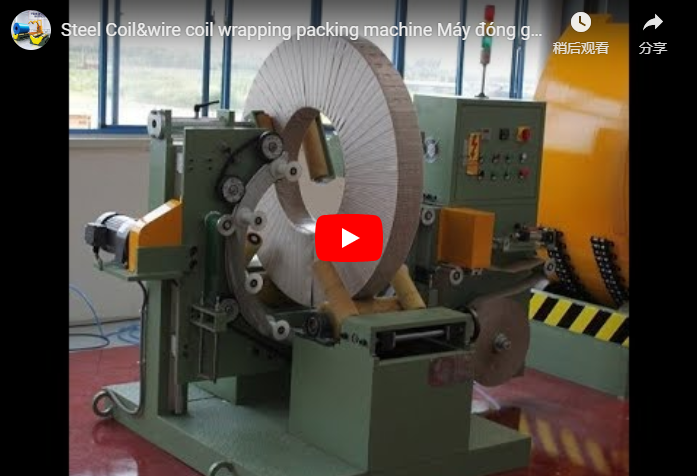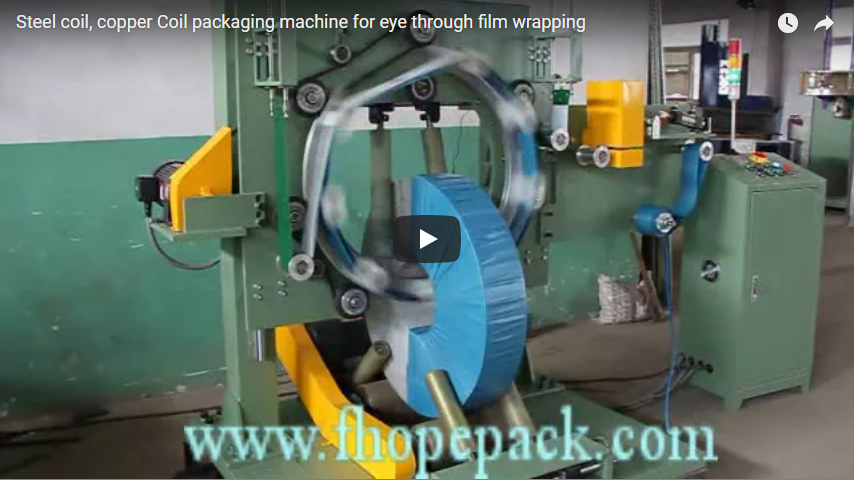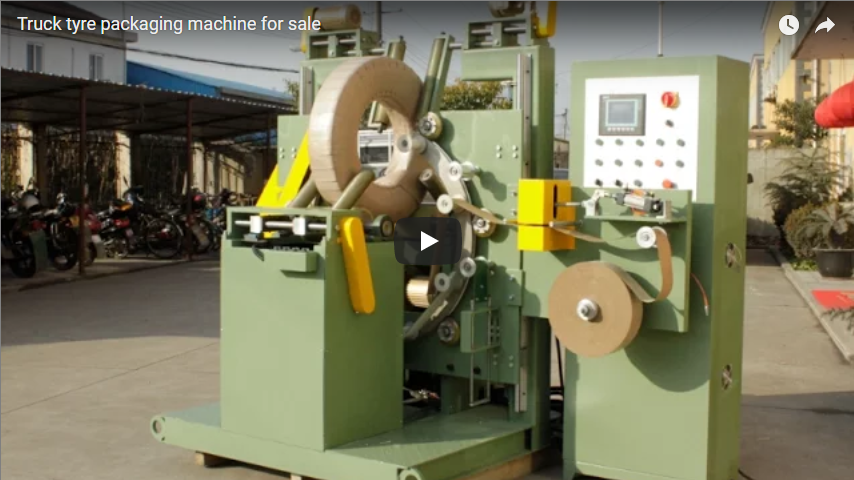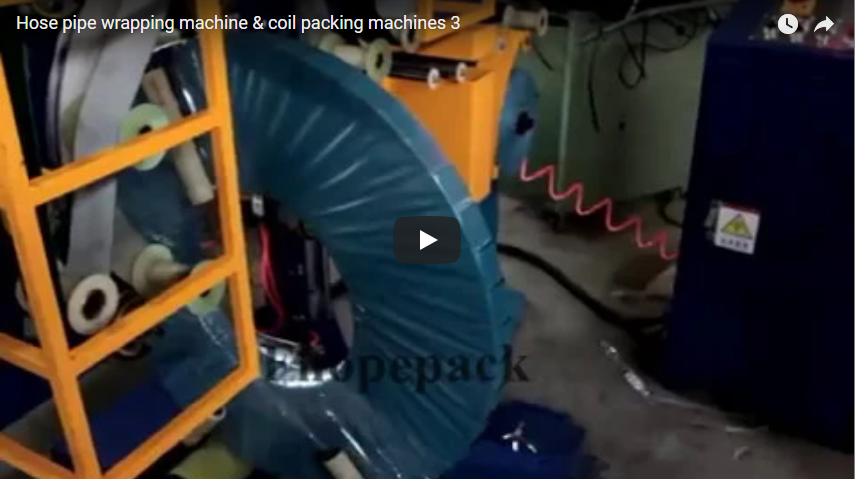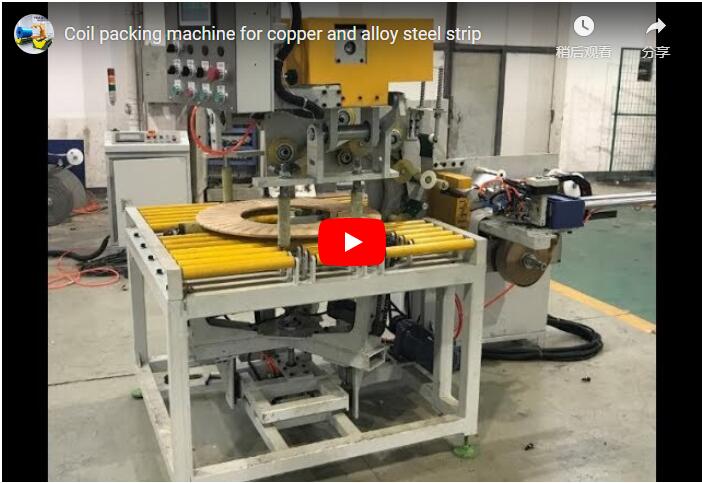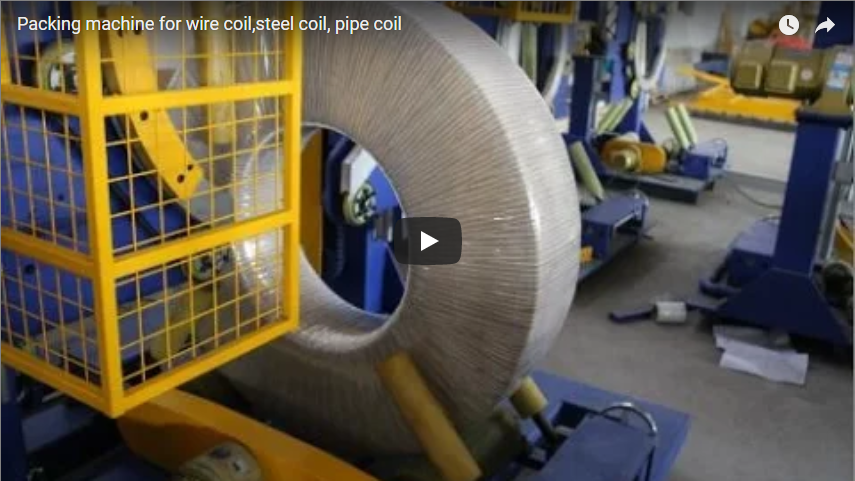Optimizing Packaging for Thin Steel and Copper Coils: A Technical Overview
Handling thin gauge steel and copper coils presents unique challenges in fabrication and manufacturing environments. These materials are prone to damage – surface scratches, edge deformation, and oxidation – which can compromise quality and lead to costly scrap. An effective packaging solution is crucial not only for protection during transit and storage but also for maintaining material integrity right up to the point of use. The automated thin coil wrapping machine addresses these specific needs.
1. Machine Design Philosophy: Precision and Protection
Unlike general-purpose coil wrappers, a machine engineered for thin steel and copper coils focuses on delicate handling and precise application of protective materials. Key design considerations include:
- Gentle Coil Handling: Mechanisms must support and rotate the coil without inducing stress or deforming thin edges. This often involves smoother contact surfaces and carefully calibrated support rollers.
- Adjustable Tension Control: Applying wrapping material (like stretch film, VCI paper, or non-woven fabrics) requires precise tension. Too much tension can distort the coil or damage its surface; too little results in a loose, ineffective wrap. Advanced systems allow operators to fine-tune tension based on the specific coil material, thickness, and wrapping material used.
- Precise Alignment: Ensuring the coil is perfectly centered and aligned with the wrapping ring is critical for consistent overlap and complete coverage, especially important for preventing edge damage and moisture ingress.
- Material Feed Systems: Automated feeding and cutting of wrapping materials streamline the process, reducing manual handling and ensuring consistent wrap quality. Compatibility with various materials allows flexibility based on protection requirements (e.g., VCI for corrosion prevention, stretch film for physical containment).
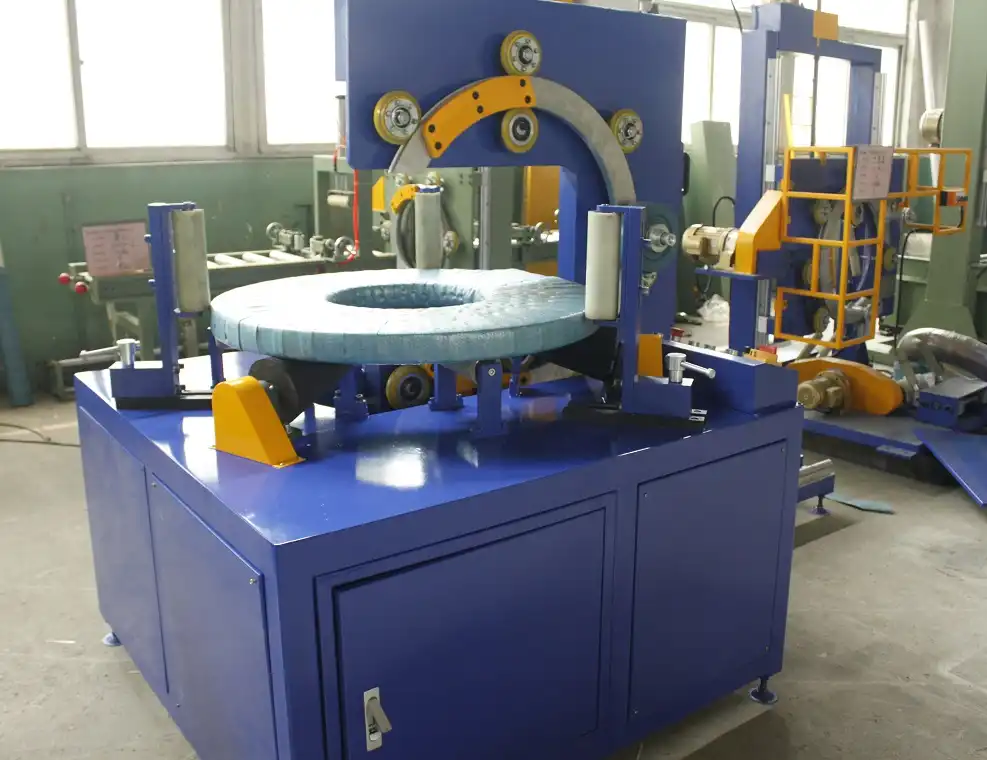
2. Key Operational Parameters and Their Significance
While specific configurations vary, understanding the typical parameters provides insight into the machine's capabilities. Note: The parameters below are illustrative and may not exactly match the equipment shown in the video. Always consult the manufacturer for precise specifications.
- Type: Automated Thin Coil Wrapper
- Significance: Automation ensures consistency, reduces labor, and minimizes manual handling risks.
- Material Compatibility: Steel and Copper (Thin Gauge)
- Significance: Designed specifically for the challenges these delicate materials present.
- Coil Thickness Range: Typically 0.1mm to 5mm
- Significance: Highlights the focus on thinner, more damage-prone coils.
- Wrapping Material Options: Stretch film, VCI paper, Kraft paper, non-woven fabrics, laminated paper
- Significance: Offers flexibility to tailor protection against moisture, corrosion (learn more about corrosion prevention strategies), dust, and physical damage.
- Machine Speed: Example: 15-25 coils per hour (dependent on coil size and wrap cycles)
- Significance: Balances careful handling with production throughput needs.
- Control System: Advanced PLC with touchscreen interface (HMI)
- Significance: Allows for easy setup, recipe storage for different coil types, precise control over wrapping parameters (overlap, tension), and diagnostics. From an operator's standpoint, a user-friendly HMI significantly reduces setup time and potential errors.
- Power Consumption: Approx. 2.0 kW (variable)
- Significance: Relatively efficient for automated industrial equipment.
- Voltage Requirement: Typically 380V, 50Hz, three-phase (or tailored to regional standards)
- Significance: Standard industrial power requirement.
- Machine Footprint (Example): Length: 3600mm; Width: 1800mm; Height: 2000mm
- Significance: Important for facility layout planning.
- Approximate Weight: 800kg
- Significance: Relevant for floor load considerations and installation.
- Operational Noise Level: Below 70 dB
- Significance: Contributes to a safer and more comfortable working environment.
- Environmental Requirements: Humidity 5-95% non-condensing
- Significance: Standard operating conditions for industrial electronics.
- Safety Mechanisms: Automatic shutdown on error, physical safety barriers, emergency stops
- Significance: Essential for operator safety and equipment protection.
3. Real-World Applications and Benefits
Integrating a specialized thin coil wrapping machine offers tangible advantages across various sectors:
3.1 Electronics Industry: Preserving Conductivity and Purity
- Challenge: Thin copper foils and strips used in PCBs, transformers, and wiring are highly susceptible to oxidation and surface contamination, which degrades electrical performance. Handling damage (scratches, kinks) is also a major concern.
- Solution: The machine applies a tight, protective wrap (often including VCI materials) immediately after slitting or processing. This shields the copper from atmospheric contaminants and physical damage, ensuring it arrives at the next production stage or customer site in pristine condition. Operators often report a significant reduction in material rejection rates due to handling or environmental damage.
3.2 Precision Engineering & Stamping: Maintaining Tolerances and Finish
- Challenge: Thin gauge steel, often stainless or specialized alloys, used for precision stamped parts, springs, or shims requires immaculate surface finish and tight dimensional tolerances. Any surface defect or distortion can render the material unusable.
- Solution: Precise tension control during wrapping prevents the introduction of stress or distortion into the coil. The secure wrap protects mirror finishes or specific surface treatments from scratches or contamination during storage and internal transport. This directly translates to higher yields in subsequent stamping or forming operations.
3.3 Automotive Manufacturing: Efficiency in Component Supply
- Challenge: Automotive relies on 'just-in-time' delivery of components, including thin steel and copper coils for electrical systems (e.g., wiring harnesses, connectors) and lightweight body or interior parts. Damage during transit leads to production line stoppages.
- Solution: Automated wrapping ensures coils are securely packaged for robust transport. Consistent, unitized packaging simplifies logistics, receiving, and storage at the assembly plant. The ease of unwrapping at the point of use, without damaging the material, contributes to maintaining production efficiency.

4. Operational Experience: Beyond the Specs
From an operational perspective, these machines offer more than just protection. Experienced users often highlight:
- Reduced Labor: Automating the wrapping process frees up personnel from tedious and potentially injury-prone manual wrapping tasks.
- Consistency: Automated wrapping eliminates the variability inherent in manual processes, ensuring every coil receives the same level of protection.
- Material Savings: Precise control over film stretch and overlap can optimize wrapping material consumption compared to manual methods.
- Improved Safety: Enclosed wrapping areas and automated sequences reduce operator exposure to moving parts and manual handling strains.
For specific technical details or to discuss how this type of thin coil steel/copper wrapping machine can be integrated into your workflow, please reach out.
info@fhopepack.com

